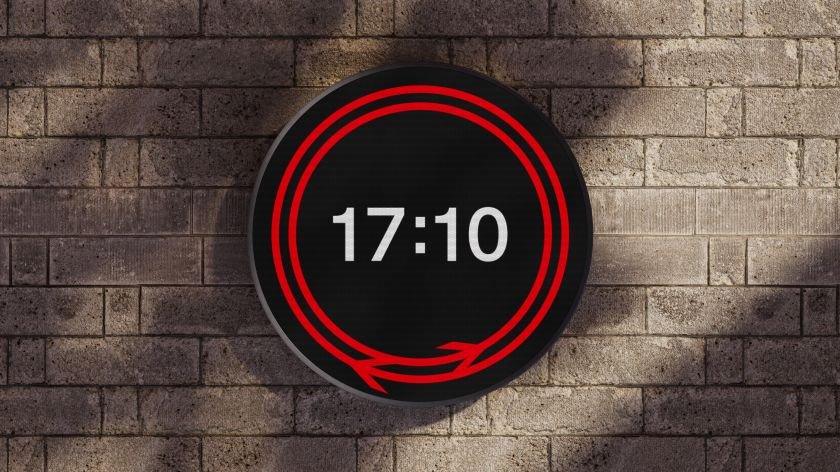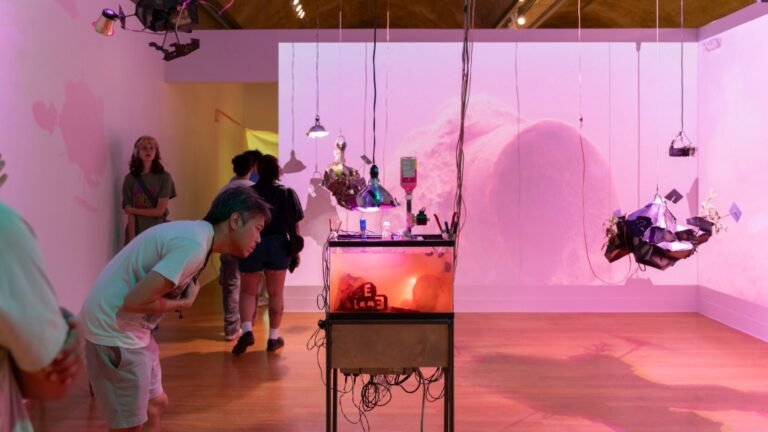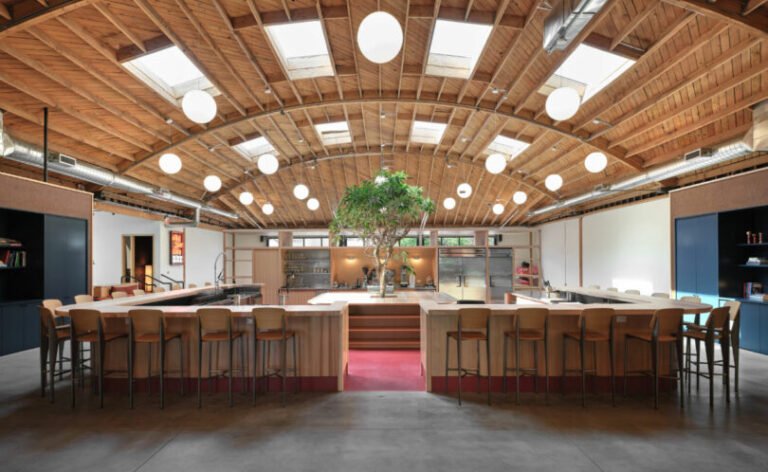

Created in collaboration with Network Rail, RIBA and the Design Museum, the striking new clock debuts at London Bridge station as a new icon of British design, blending heritage, accessibility and innovation.
A new chapter in Britain’s railway story has been marked with the unveiling of Rail Clock, which is the country’s first national clock design in more than half a century.
Revealed today (16 October) at London Bridge station, the striking new timepiece by Design Bridge and Partners is set to become a landmark of British design and a powerful symbol of connection across the UK’s rail network.
Commissioned by Network Rail to coincide with the railway’s 200th anniversary in 2025, the project aimed to create a standardised clock that could unify the passenger experience across the country while celebrating the rich heritage of British rail design. The result is a 1.8-metre physical and digital timepiece that fuses timeless symbolism with modern functionality, and reimagines one of the nation’s most recognisable icons in the process.

The clock was chosen as the winning entry in an international design competition run in partnership with RIBA and the Design Museum, and is already being hailed as a future classic. “We are incredibly proud to have won the ‘Timepiece for the Railway’ competition,” says Mark Wood, creative partner at Design Bridge and Partners. “Our ambition was to create a new icon of British design that creates lasting impact, and we hope Rail Clock becomes the face of time across the railway for many years to come.”
At the heart of the design is a reimagining of the double arrow symbol, which some might recognise as a version of the enduring graphic created by Gerry Barney in 1965 that is still used across Britain’s railways today. The motif is dynamically integrated into the clock face, its two halves travelling in opposing directions and converging precisely every 30 seconds. It’s a subtle yet powerful metaphor for the ebb and flow of journeys across the country, and the millions of connections made on the railways every day.
“In 1965, it was wonderful to win the competition to design the symbol of our railway,” says Gerry. “Now in 2025, I’m thrilled to see the winning entry that continues to celebrate it in a new timepiece for future generations of rail passengers to enjoy – what Design Bridge and Partners have created is really magic.”



Function and accessibility were just as central to the brief as form. A bold 24-hour display uses an updated version of Rail Alphabet 2, originally designed by Margaret Calvert and digitised by Henrik Kubel, while consultation with accessibility experts ensured the design is easy to read and intuitive for all users.
“We were looking for something exceptional,” says Margaret, who was part of the competition jury. “And the outcome is an accessible piece of design that’s made for everyone who uses the railway.”


Beyond its visual appeal, Rail Clock is designed to be deeply functional and versatile. It will feature not only as a physical landmark in stations but also as part of a new generation of Customer Information Screens (CIS) rolling out across Network Rail-managed stations. Its design can be adapted for any digital format – from smartphones to smartwatches – and will soon be available to the public as a watch face via Android app stores.
A pop-up shop from the Design Museum is also celebrating the launch with exclusive merchandise inspired by Britain’s railway heritage, available at London Bridge station and online. The launch of Rail Clock also coincides with a period of significant transformation for Britain’s railways as they move towards a more integrated and passenger-focused future.
“Two hundred years after the first railway opened in Britain, we’re about to embark on a new journey as a railway, putting passengers first,” says Anthony Dewar of Network Rail. “A clock is the first thing people look for when they arrive at a station. The railway is driven by time – being ‘on time’ is our promise to passengers – and clocks have always provided landmarks for people to meet at and navigate their way around stations.”


Rail Minister Lord Peter Hendy says: “British ingenuity and passion are the foundations of the railway, from the very first passenger service 200 years ago to the millions of rail journeys now taken every day.
“This clock represents a bridge between the historic past and a new future for our railways — an integrated railway network that’s more reliable, consistent, efficient and accountable.”
Design Bridge and Partners explains how that sense of continuity was key. “Our partnership with Network Rail, RIBA and the Design Museum has been highly collaborative, and seeing Rail Clock come to life is immensely rewarding,” says Kevin Lan, creative director. “We wanted to create something that honours the legacy of British rail design while shaping its future.”
As Britain’s railways prepare to celebrate 200 years of movement, Rail Clock is a timely reminder that design, like the network itself, is always evolving. It’s a new face for British time that’s both rooted in the past but looking firmly to the future.






